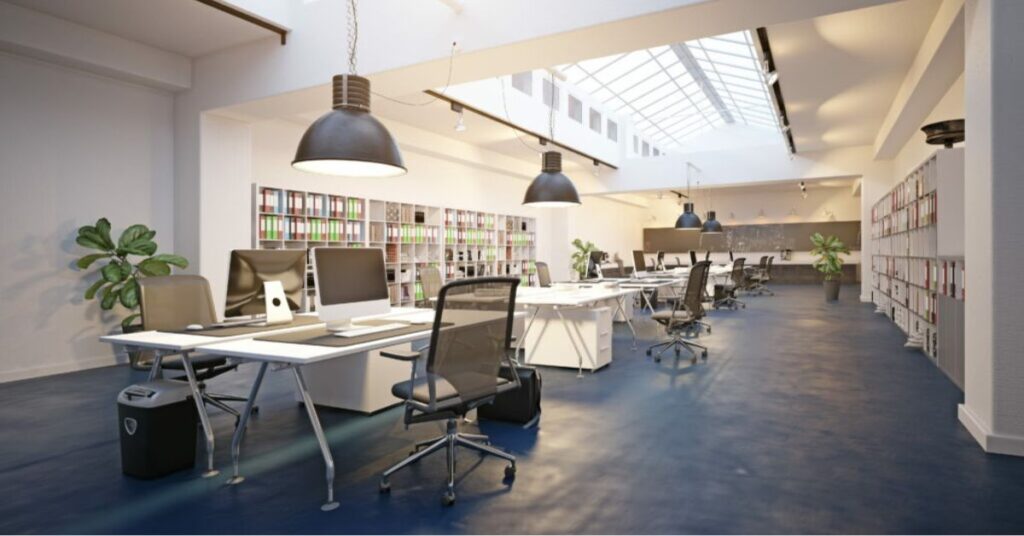Comfort is no longer a luxury in commercial buildings—it’s an expectation. Whether you’re managing an office complex, retail space, or mixed-use facility, the experience of comfort can directly impact productivity, satisfaction, and tenant retention. But what exactly makes a commercial space feel comfortable? It’s a combination of design, maintenance, technology, and attention to detail. Let’s explore proven strategies to create commercial spaces where people feel at ease and eager to return.
1. Prioritize Indoor Air Quality
Clean, well-circulated air is essential for maintaining a comfortable environment. Poor indoor air quality can cause fatigue, headaches, and a drop in concentration levels. To combat this, ensure that HVAC systems are routinely serviced and filters are replaced according to schedule. Upgrading to high-efficiency particulate air (HEPA) filters or installing advanced air purification systems can significantly improve air quality, particularly in high-traffic areas.
Effective ventilation is just as critical. Where possible, utilize operable windows to allow natural airflow. Additionally, mechanical ventilation systems—including industrial fans and blowers—can greatly enhance air circulation by pushing stale air out and drawing fresh air in. These systems are especially beneficial in larger commercial spaces or areas with limited natural ventilation. Smart air quality sensors can also be integrated to monitor real-time levels of CO2, humidity, and airborne contaminants, enabling facility managers to make timely adjustments and maintain optimal indoor conditions.
2. Optimize Temperature and Climate Control
Temperature is a key comfort factor—too cold or too warm, and occupants quickly become distracted. Installing programmable, zone-based thermostats allows more control over temperature settings in different areas, accounting for usage patterns and occupancy levels.
Smart climate control systems can also adjust settings automatically based on time of day or weather conditions, ensuring a consistent environment without wasting energy. Make sure that heating and cooling systems are energy-efficient and regularly serviced for peak performance.
3. Maximize Natural Light and Proper Lighting
Lighting affects not only visibility but mood and energy levels. Maximize the use of natural light through large windows, skylights, and glass partitions. Daylight boosts morale and can even enhance productivity in workplaces.
However, natural light alone isn’t enough. Install layered lighting that combines ambient, task, and accent lighting. Use LED fixtures with adjustable brightness and color temperature to suit different needs throughout the day, ensuring spaces are well-lit but not harsh or glaring.
4. Acoustic Comfort Matters
Noise can be a significant source of discomfort in commercial buildings. From clattering footsteps in hallways to the hum of HVAC systems or neighboring conversations, unmanaged sound can affect focus and enjoyment of a space.
To combat this, use sound-absorbing materials such as acoustic ceiling tiles, carpets, wall panels, and insulated windows. In shared workspaces or open-plan offices, consider installing acoustic partitions and white noise machines to reduce distraction and promote concentration.
5. Flexible and Thoughtful Layouts
Comfort also comes from how easily people can move through and use a space. A good layout should allow for natural flow, easy navigation, and adaptability. Wide hallways, clearly marked signage, and accessible entrances make movement smoother for all users.
Create zones for different activities—collaborative areas, quiet rooms, rest zones, and break areas—to support varying needs. Ensure that furniture is ergonomic and arranged to promote interaction or solitude, depending on the purpose of the space.
6. Incorporate Biophilic Design Elements
Bringing elements of nature indoors can significantly enhance comfort and reduce stress. Biophilic design—such as incorporating indoor plants, green walls, water features, or natural materials like wood and stone—helps create a more inviting and calming environment.
These touches aren’t just aesthetic; studies show that exposure to greenery improves well-being, mental focus, and even air quality. Integrate greenery in communal spaces, lobbies, and office areas to improve the overall ambiance.
7. Maintain Cleanliness and Hygiene
No matter how well-designed a building is, a dirty or disorganized space can make occupants feel uncomfortable. Develop a regular cleaning schedule that includes restrooms, lobbies, kitchens, elevators, and high-touch surfaces.
Post-pandemic, cleanliness has become even more critical. Provide hand sanitizing stations throughout the building and consider touchless technology for doors, faucets, and elevators. A tidy environment not only looks better—it also communicates care and professionalism.
8. Engage Occupants for Feedback
One of the best ways to ensure comfort is to ask the people who use the building. Conduct regular surveys or create feedback channels where occupants can report issues or suggest improvements. By actively listening, building managers can address problems quickly and show occupants that their comfort is a priority.
In Conclusion
Comfort in commercial buildings is the result of thoughtful design, proactive maintenance, and responsive management. By focusing on air quality, lighting, climate control, noise reduction, layout, and cleanliness, you create a space that doesn’t just function—but feels good to be in. Comfortable spaces lead to happy tenants, productive workers, and ultimately, a more successful commercial property.
Also Read: Prefab Homes and Resale: Are They a Good Investment?

